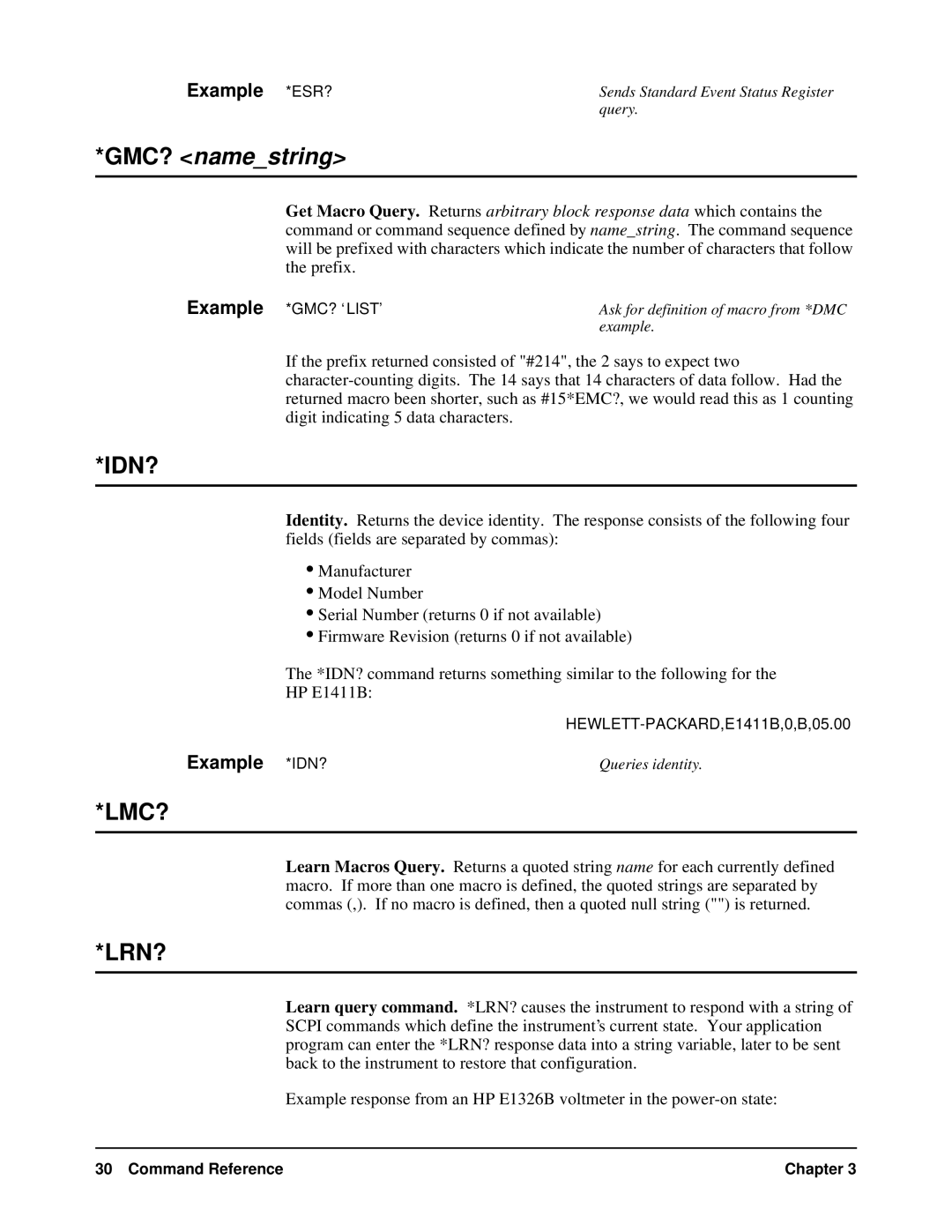
Example *ESR? | Sends Standard Event Status Register |
| query. |
*GMC? <name_string>
Get Macro Query. Returns arbitrary block response data which contains the command or command sequence defined by name_string. The command sequence will be prefixed with characters which indicate the number of characters that follow the prefix.
Example *GMC? ‘LIST’ | Ask for definition of macro from *DMC |
| example. |
If the prefix returned consisted of "#214", the 2 says to expect two
*IDN?
Identity. Returns the device identity. The response consists of the following four fields (fields are separated by commas):
•Manufacturer
•Model Number
•Serial Number (returns 0 if not available)
•Firmware Revision (returns 0 if not available)
The *IDN? command returns something similar to the following for the
HP E1411B:
Example *IDN? | Queries identity. |
*LMC?
Learn Macros Query. Returns a quoted string name for each currently defined macro. If more than one macro is defined, the quoted strings are separated by commas (,). If no macro is defined, then a quoted null string ("") is returned.
*LRN?
Learn query command. *LRN? causes the instrument to respond with a string of SCPI commands which define the instrument’s current state. Your application program can enter the *LRN? response data into a string variable, later to be sent back to the instrument to restore that configuration.
Example response from an HP E1326B voltmeter in the
30 Command Reference | Chapter 3 |
